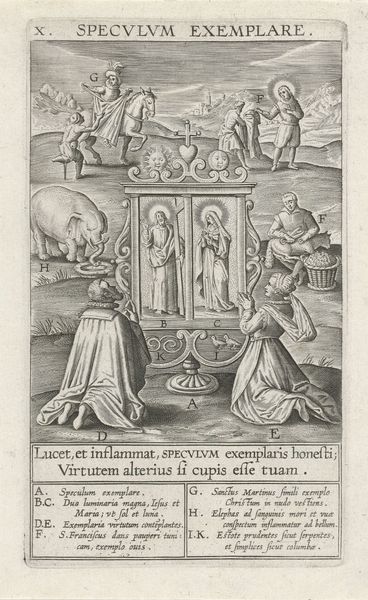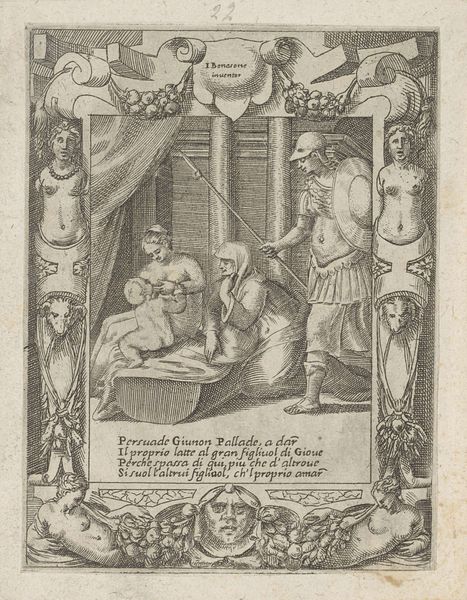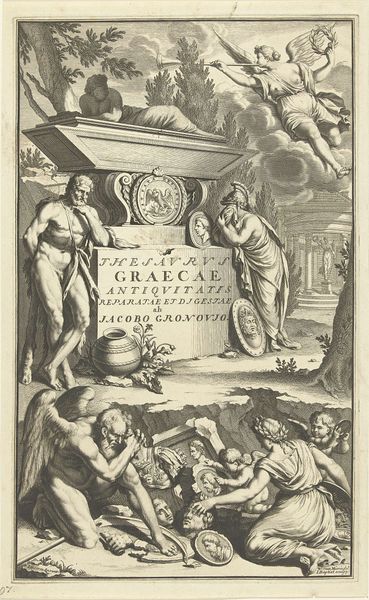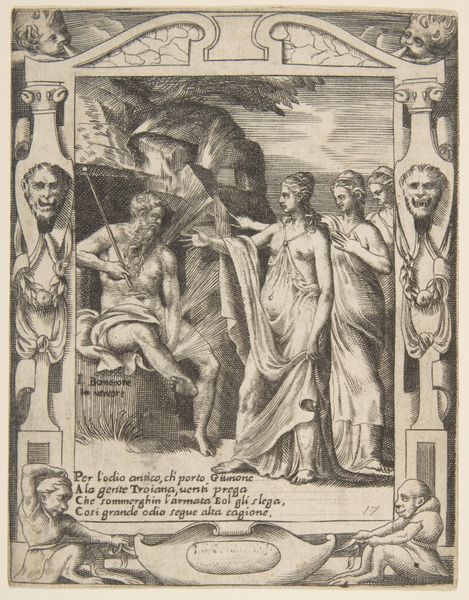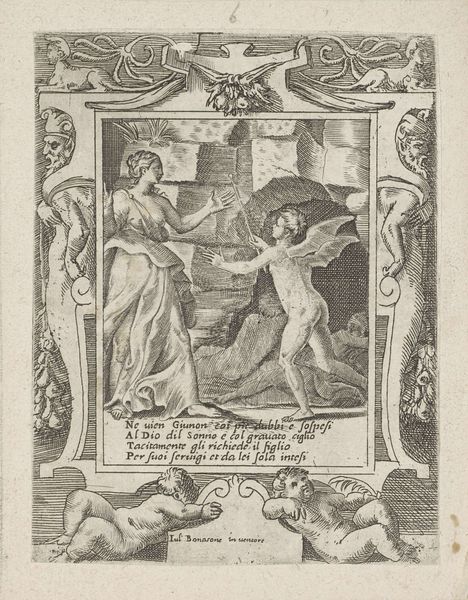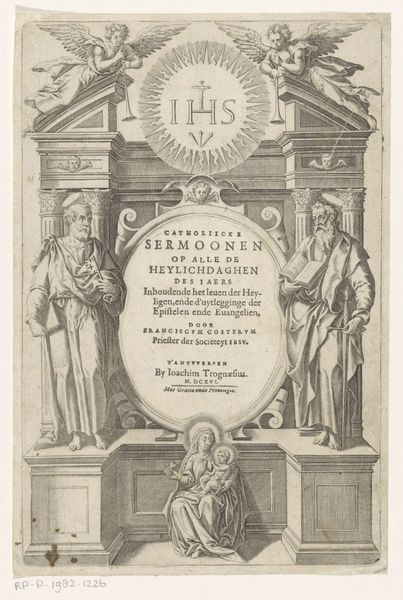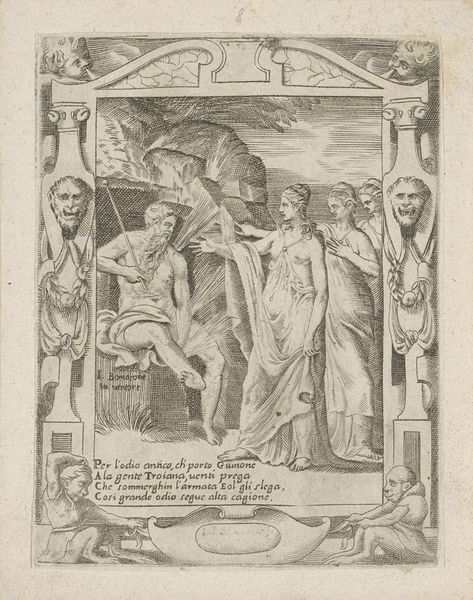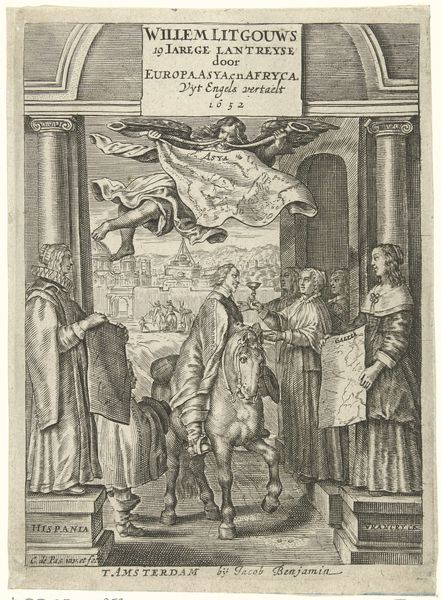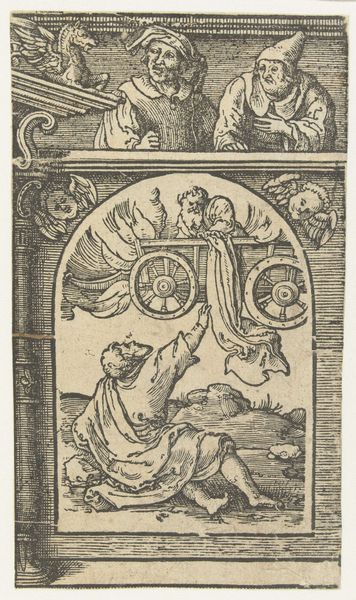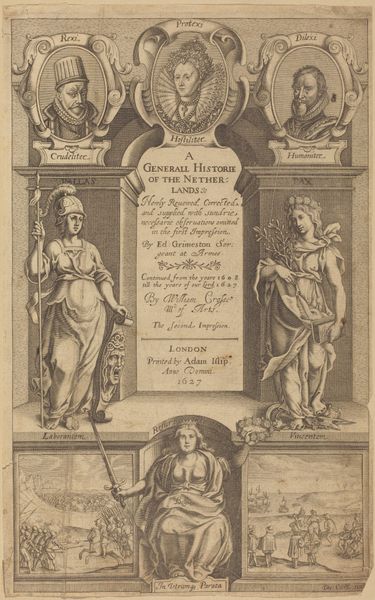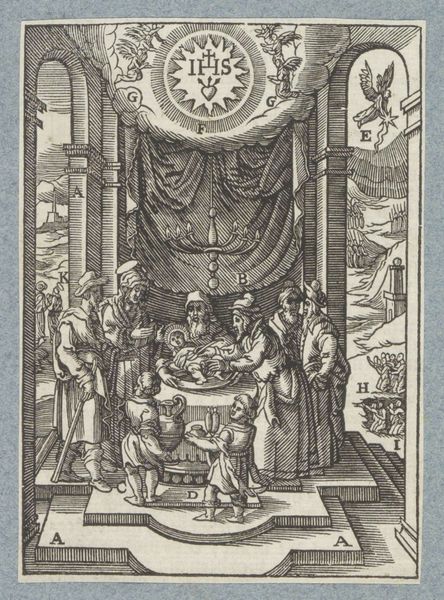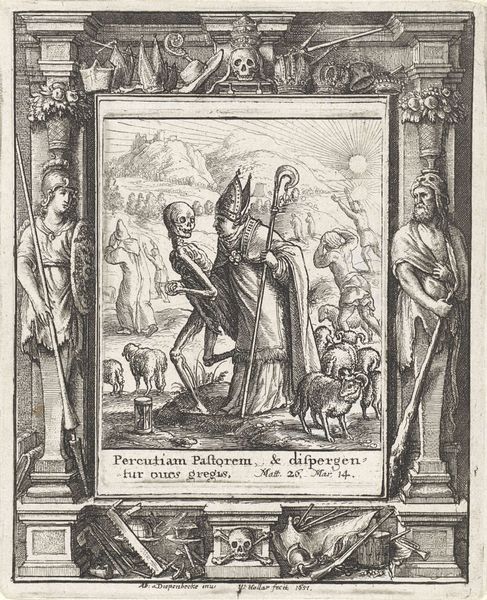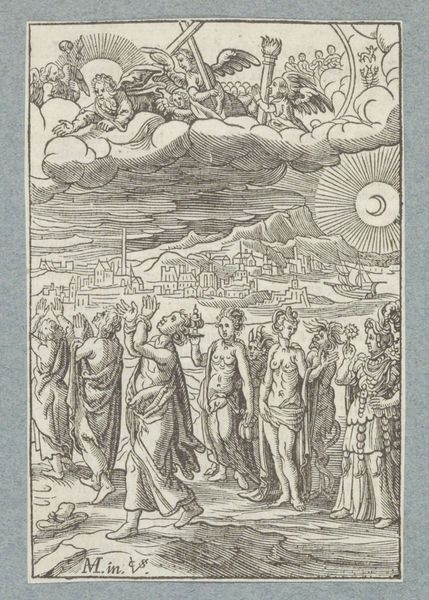
print, engraving
#
portrait
#
baroque
# print
#
old engraving style
#
landscape
#
bird
#
history-painting
#
engraving
Dimensions: height 128 mm, width 70 mm
Copyright: Rijks Museum: Open Domain
Editor: Here we have "Man by an Altar in a Landscape," an engraving made in 1666 by Christiaan Hagen. It's interesting how the composition is separated into distinct sections, like a visual hierarchy. What do you see when you look at this print? Curator: The immediate impact arises from its meticulous organization and layered structure. Hagen employs stark contrasts to define the spatial arrangement. Note how the architectonic elements—the framed panels and circular portrait—create distinct planes within the print. These divisions generate a sense of order and hierarchy, wouldn't you agree? Editor: I see what you mean about the layers, like it’s not just one scene. Curator: Precisely. Furthermore, consider the use of symmetry. The cherubic figures and avian representations flanking the central panels contribute to a sense of balanced harmony, yes? Yet, this symmetry is subtly disrupted by variations in pose and expression. Editor: So the artist is setting up an expectation and then slightly undercutting it. Curator: Indeed. That delicate dance between order and variation draws the eye and invites closer inspection. It is this internal dialogue of form that constitutes the artwork's essential character, providing aesthetic pleasure but also communicating underlying principles. It reveals the artist’s understanding of space as structural elements, creating contrasts. Editor: That’s fascinating; I was focused on the landscape aspect, but seeing it in terms of symmetry and asymmetry makes me look at it in a new way. Curator: Form is at once both stable and dynamic in this piece, rewarding repeated examinations.
Comments
No comments
Be the first to comment and join the conversation on the ultimate creative platform.
